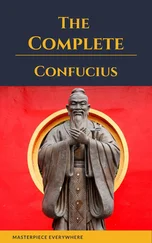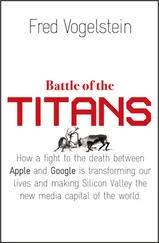Instead, he went every day to sit for hours under a green-shaded lamp in the vast, high-ceilinged reading room of the Lenin Library near the Kremlin. The library held the largest collection of books, documents, and dissertations in the country, in hundreds of languages. One day, while there, he discovered an article written by Chester Carlson, an American physicist, about the process of electrophotography, or, more simply, photocopying. [7] Chester Carlson, an American physicist and inventor, created a dry photocopying technique in 1938 and patented his invention on October 6, 1942. US Patent, US 2297691 A, via Google Patents, www.google.com/patents/US2297691 .
There was nothing like photocopying in the Soviet Union. Fridkin was intrigued by the possibility that he could build a Soviet copying machine. First, he went to the institute’s department of electrical equipment and asked them to get him a high-current generator. Then he went back to the physics department where he had studied at the university and obtained sulfur crystals and a photographic enlarger. In his small office he experimented. He tried to make a copy of a page, then of a photograph. One day he succeeded in duplicating an image of Mokhovaya Square, a well-known landmark in front of the Kremlin. When the director of the institute saw this he exclaimed, “You do not understand what you invented!” The director immediately ordered the institute’s designers to take what Fridkin had done and transform it into a single machine that could make photocopies. When they managed to do this, the first copying machine in the Soviet Union was born. It was box-like, more than three feet high and two feet across, with two cylinders on the top and the high-current generator attached. It was named the Electrophotography Copying Machine No. 1.
Even though the machine was primitive, nobody doubted the significance of the invention. The institute director called the ministry—in the Soviet centrally planned economy, a government ministry oversaw every such institute. Soon the minister himself came to the Institute of Polygraphic Engineering to see the machine, and he was so impressed that he ordered it into mass production. A factory in Chisinau in the Soviet republic of Moldova was selected to produce the new machines, and a special electrophotography research institute was established in Vilnius. At twenty-four years old, Fridkin was appointed deputy chief. He was featured in a television show praising the Soviet achievements in science. He was also paid a bonus for his accomplishment.
Although Fridkin felt much better, he still wanted to be a physicist. At last, in 1955 he was given a job at the Institute of Crystallography. When he moved there, his copying machine followed him. For two years his colleagues at the institute came to his room every day to use his machine to copy articles from foreign journals. Fridkin became a very popular person in the institute. Then, one day in 1957, a nice young woman from the KGB section walked into his room. Fridkin had known her. She had a pretty face, wore plain clothes, and Fridkin often spent time drinking tea and chatting with her. But she brought bad news. “I have to take away your device and destroy it,” she said. Fridkin asked whether she knew that this was the first copying machine in the Soviet Union. “I know, but people who come over to you can copy some prohibited materials,” she replied.
The first copying machine in the Soviet Union was smashed to pieces, and the parts were taken to a dump. One critical part of it, a slab of mirror, was salvaged and put up in the women’s restroom. Fridkin’s institute did not carry out secret research, so the decision to destroy his machine was not protecting anything at the institute; rather, it reflected the broader and deeper paranoia of the Communist Party. The party maintained a stranglehold on power and a chokehold on information. It could not tolerate the possibility that Fridkin’s invention might be used to freely make copies of unapproved documents for unauthorized circulation.
In a few years the factory in Chisinau ceased production. Fridkin knew that the quality of the machines produced by the Chisinau factory was not very high. But it was hardly a reason to stop making them. Later, when photocopying became routine in the West, the Soviet Union bought Western Xerox machines, but its attitude to information remained unchanged. The few photocopiers that were brought from abroad were kept under lock and key in party offices or in the Academy of Sciences. In many factories and institutes a special staffer operated the photocopier under the watchful gaze of the KGB. It happened in Fridkin’s institute too. He seethed with anger at the sight of the photocopying machines in his own institute being locked in the prison of information.
Stalin died in March 1953, and the brutal, totalitarian system of mass repression slowly began to relax. The mood in Soviet society started to change. Many gulag prisoners were released and returned home by 1955. In February 1956 Nikita Khrushchev, the new Soviet leader, made a speech at a closed session at the 20th Party Congress denouncing Stalin’s crimes. The “secret speech” lasted four hours. In a few years Khrushchev loosened state controls in a period that became known as the Thaw. Dozens of different freethinking groups blossomed in the Soviet Union, including Moscow intellectuals, artists and writers, all kinds of nationalists, and Jews who had been denied permission to emigrate, known as “refuseniks.” It was a time when many were optimistic, especially young people who yearned for better lives after the deprivations of war and Stalinism. But the Thaw did not last. In 1964 Khrushchev was ousted and replaced by Leonid Brezhnev, who effectively ended reforms. In the autumn of 1965 arrests of intellectuals and writers began in Moscow and Ukraine, and censorship tightened. The Soviet invasion of Czechoslovakia in August 1968 effectively marked the end of the Thaw.
But one feature of the period did not disappear. The circulation of uncensored information became an essential part of the dissident movement, if not its main goal. This included the circulation and copying of manuscripts, known as samizdat , or self-published, that covered a wide range of material: banned works of literature, social and political commentary, open letters, Solzhenitsyn’s novels, and, from 1968 to the early 1980s, the Chronicle of Current Events , which reported human rights violations in the Soviet Union. Soviet dissidents didn’t have Fridkin’s machine. Nor did they have a Western-made Xerox. They hammered out their works on carbon paper with a typewriter known as the Erika, made in Eastern Germany, which could produce only four copies at a time.
In the Soviet Union the state had always held the upper hand when it came to distributing information. All other sources, like independent media or the church, were outlawed. “A newspaper is not only a collective propagandist and a collective agitator, it is also a collective organizer,” Lenin wrote in 1901 in the fourth issue of Iskra , the main Bolshevik newspaper. The Bolsheviks wanted newspapers to organize and mobilize the masses, not to inform them. They could not tolerate an independent press after the 1917 revolution: from their point of view it was impossible to let the enemy have such a powerful tool to mobilize the masses. Stalin repeated Lenin’s words in 1923 in an article, “The Press as Collective Organizer,” in Pravda . [8] Joseph Stalin, “Pechat kak Kollektivny Organizator” [The Press as Collective Organizer], Pravda , May 6, 1923.
In the 1930s all Soviet cities were filled with street loudspeakers, spreading propaganda. Just like in the Middle Ages, when the church bells defined the day, in Stalin’s Soviet Union the day started with a national anthem broadcast by a loudspeaker on the street, and it ended with the anthem. There was no way to turn the loudspeakers off. For many decades Soviet citizens had no choice in what they could listen to or read. By the end of World War II an entire generation had come of age not knowing anything else, let alone what they had lost. They lived all their lives to the echo of the words and formulas dictated by the state.
Читать дальше












